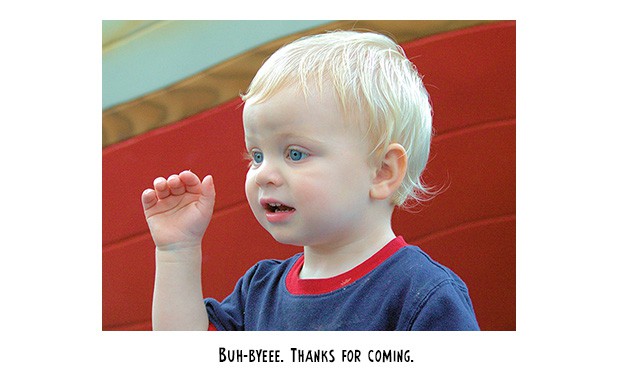
“This is really good. I like how you have to figure out what’s in your opponent’s hand to get rid of it.”
“This doesn’t work for me. It’s taking about five minutes longer than it should, and I think there are too many cards in the game. How many cards could you remove from this deck?”
—
A year ago, I would have much, much rather gotten the first feedback – that my game is vaguely great and don’t change anything – but a year ago, I didn’t take feedback well. Now, the second piece of feedback, which was the only negative comment I got about a game that I’m working on, was the best feedback I got at my second UnPub.
So, what happened? Did the feedback get better in a year? Yup. That’s probably it. Article done.

But what really happened is that I got better at taking feedback, and in reflecting over it, I’ve realized that I went through a series of stages in my relationship with feedback. The process is ongoing, but in the hopes that knowing the stages I’ve gone through can help others know where they are and go somewhere better, here they are.
STAGE 1 – “I DON’T NEED FEEDBACK. I KNOW MY GAME!”
Ugh. Looking back on this stage, I just want to hop in a Delorean, slap Past Me, drag him to Metatopia and/or UnPub, then schedule a playtesting day at my house with all of the awesome people I’ve met in the past two years so they can tell me everything wrong with my designs.
The Problem: An utter lack of self-reflection – or even the capability to do so.
But, I didn’t even know enough about game design to know what I was doing wrong…or even that I could really be doing anything wrong. I didn’t understand that I needed feedback to make my games good.
The Solution: Get some feedback.
It’s really that simple. You need feedback unless you’re just making a solitaire game that you plan to play alone in your house while listening to Death Cab for Cutie by the light of the sorrowful moon and crying. We make games for other people. Find out what they think.
STAGE 2 – “THAT WAS GOOD FEEDBACK. IT AGREED WITH WHAT I THOUGHT COMING IN!”
At my first Metatopia at the end of 2013, I brought four games, ostensibly so that people could tell me how great they are. For the most part, that’s what happened – because that’s what usually happens when playtesting a decent game with an average playtester.
The Problem: Confirmation bias.
As people, we tend to hear what agrees with what we already think. It’s why people like most cable news stations. As humans, we don’t want to be threatened, and being in an echo box where we hear our opinions bouncing back to us isn’t threatening. Unless we’re actively looking for things we hadn’t already thought, we’re prone to miss things that don’t jibe with what we already think.
The Solution: Write it all down.
Even if you think it’s a bad idea, write everything down. I learned this from watching Chris and Suzanne Zinsli of Cardboard Edison, who write down every word people tell them about their games. Avoiding details to avoid shaming anyone, I was in a playtest for their game Dubai (Cottage Industry at the time), and during the feedback, someone offered volumes of suggestions that weren’t very good. Chris wrote everything down, and Suzanne asked clarifying questions to make sure they understood it. When the test wrapped, I stayed after and said, “That person was an idiot. They made bad choices and want you to prevent them from being able to do that – but that would make the game play them rather than the other way around.” (I remember being very proud of saying something that sounded smart to Cardboard Edison.) Chris said, “Oh, I know. We’re probably not going to do any of that. I write everything down to make sure I’ve got it all just in case.”
From that moment on, I carried a notebook with me any time I thought I might play one of my games. Because I want to be Cardboard Edison when I grow up.
STAGE 3 – “HERE’S WHY YOU’RE WRONG…”
But listening isn’t enough. You can hear everything people say – even remember it – but young designers tend to be quick to respond to feedback by saying either, “Oh, I already thought of that and here’s why it doesn’t work!” or “Here’s why that wouldn’t work.” At least I know I did.
The Problems: Ego & Theory vs. Practice
First off, the ego can get involved here. We all want to be the smartest person in the room, and when someone critiques something – especially if you love it and it’s your “kid” – we bristle and want to dismiss it. In some ways, it’s an extension of the previous problem. We don’t want to have to consider that we might be wrong.
Second, not everything that sounds good in theory actually works in practice…but the same is true of the reverse. Something could sound not so interesting but be amazing, which I learned from Hogger Logger. There’s a longer story that involves literal magic tricks and me being kind of a jerk in my head, but the short version is this: I did not think I’d like Hogger Logger, a party game where you guess whether a number is going to be higher or lower than the one before it. But, when I begrudgingly played it because they’d played Gothic Doctor, I realized that what didn’t work in my head worked amazingly well in practice…and that I was playing my new favorite party game. So, don’t be quick to assume that something won’t work just because you think it won’t.
The Solutions: Assume They’re Right & Try It
When it comes to the ego, the best practice that I started employing to get over this was to say, “Okay. Let’s assume that person is right.” In some ways, the person is, no matter what they say; they had a subjective opinion of the game, and their opinion is valid. They might have disliked something that you love. It might be that a lot of people dislike something that you love.
Second, there’s nothing wrong with running a playtest of an idea that you think is terrible. One of my favorite playtests of Dubai (again, when it was still Cottage Industry), was when the Zinslis added in something and before we played it, Suzanne said something to the effect of, “I think this probably won’t work and Chris is sure it won’t, but we wanted to try it.” Sure enough, it didn’t work – but it gave them the chance to try something and then break down what exactly didn’t work about it. It gave them a better understanding of where to go with the game, and it taught me that you can go into a playtest hesitant about trying something.
STAGE 4 – “EVERYONE IS RIGHT!”
A natural backlash to the previous – but definitely a better place to be than the dismissiveness of Stage 3 – is assuming that every piece of feedback you get is something that you need to incorporate. I spent a few months trying to figure out how to work every piece of feedback into my games, from the silly to the stupid to the out-and-out brilliant. It didn’t work.
The Problem: Some people are wrong
Designers have to know that some people are just not right about suggestions for the game – and this can be for a variety of reasons that I plan to outline soon. In short, though, some feedback would turn the game into something that it just isn’t, some feedback might be something that you tried already, and other feedback might be just not a great idea.
The Solution:
You shouldn’t be quick to dismiss any feedback – but you should also not twist your game into knots to incorporate it. As I said in Stage 3, though, it doesn’t hurt to give it a try. The worst that happens is that you try something, it makes the game suck, and you stop the playtest halfway through the game. And there’s nothing wrong with that.
STAGE 5 – “I’LL THINK ABOUT IT!”
Here’s where I am now, and from where I’m sitting, it’s a great place to be. If Stage 3 is the pendulum too far to the right and Stage 4 is too far to the left, then this one is just right, Goldilocks. (Or maybe it isn’t. A year from now, maybe I’ll be writing about Stages 6 through 10 and cursing 2015 Doug.)
Now, each piece of feedback I get, I write down as the person is saying it and really think about it. Sometimes, it’s only in reading back over it a week or a month later that I have an ah-ha moment about it – and sometimes I read it and think, “Yeah…that guy was really kind of a schmuck and I’m not sure why he played in the first place.”
But it’s listening carefully to Gil Hova’s advice about You’re Fired! that got me to add in the Gopher, a card that one playtester referred to as the most fun part of the game. It was listening to JR Honeycutt’s advice that it was about 5 minutes too long that I finally figured out that I could merge two cards, making the game focus just a bit more on what’s fun in the game and a bit less on the build up.
I could go on, but I know I’m wordy and I’ve said everything important. So, did I miss something? Did I skip a stage? Or is there one after this that I need to start thinking about getting myself to? Let me know, and happy gaming!
Doug Levandowski is a game designer and a mild-mannered English teacher who enjoys long walks on the beach and cookies and cream ice cream. By night, he sleeps. You can find him on Twitter at @levzilla (where he tweets pithy thoughts about gamey sort of things) and at various conventions (where you can have a hug if you’ve showered recently).








